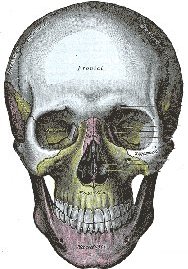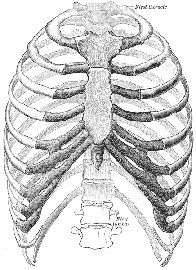Texts: (available in the bookstore)
Required:
Introduction to Forensic Anthropology (3rd ed.), Steven Byers
Bare Bones, Kathy Reichs
Recommended:
Hard Evidence: Case Studies in Forensic Anthropology by
Dawnie W. Steadman
|
Additional Reading: (see syllabus)
Kennedy, Kenneth. 2003. Trials in court: the forensic
anthropologist takes the stand. Chapter 6 in Hard Evidence, edited by
Dawnie Steadman.
Steadman, Dawnie. 2003. The pawn shop mummified head: discriminating
among forensic, historic, and ancient contexts. Chapter 16 in Hard
Evidence, edited by Dawnie Steadman.
White, Tim. 2005. The human bone manual. Chapter 17.
|
Requirements:
Labs & Homework (40%) - The majority of your grade will be
determined by 10 in-class lab projects. When noted on the syllabus, class
will meet in the Archaeology Lab in Cornish D-305. Each lab is designed
to reinforce the topics covered that week and to provide hands-on
experience. Detailed instructions and an assignment will be provided with
every lab. The lab writeup can be turned in immediately after class on
Friday or at the beginning of class on Monday. Late labs will not be
accepted, but emailed writeups are acceptable.
Midterm (20%) - The midterm will be held on March 5. It will
consist of multiple choice questions and short-answer responses.
Final Project (20%)- Rather than an exam, in this course you
will complete a final project. Following the midterm, I will hand out a
list of possible projects, including: mummification, blood spatter
analysis, blunt trauma to bone, facial reconstruction, writing a grant
proposal. Each project will come with instructions and some bibliography.
Students may work in pairs to carry out most of the projects (across
sections if desired), but the final write up must be your own.
Book Review (10%) - During the semester, you will read Bare
Bones by Kathy Reichs, a forensic anthropologist whose characters form
the
Fox TV show Bones. Guidelines for
the review will be forthcoming after
the midterm. The review is due April 7, and we will have a discussion in
class about the text.
Participation and Attendance (10%) - Your attendance at lecture
and participation in lab and class activities are required in this course.
More than two unexcused absences in lecture and/or more than one unexcused
absence in lab will result in half a letter grade deduction. Grading in
this class is on a 10-point scale (e.g., 96 = A, 82 = B-, 78 = C+).
|
Syllabus
(opens in new window)
Handouts and Slides:
Log onto WebCT
Grades:
Check your grades with WebCT.
Fun Stuff:
Directional term
matching game
Quiz
yourself on the human skeleton
Write your
name with skeletons!
News:
Taphophilia.com
|






